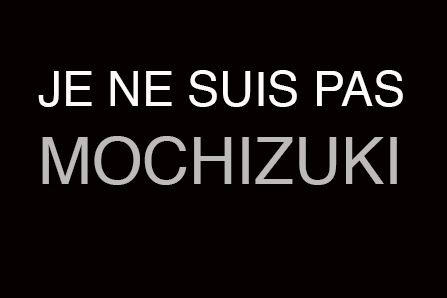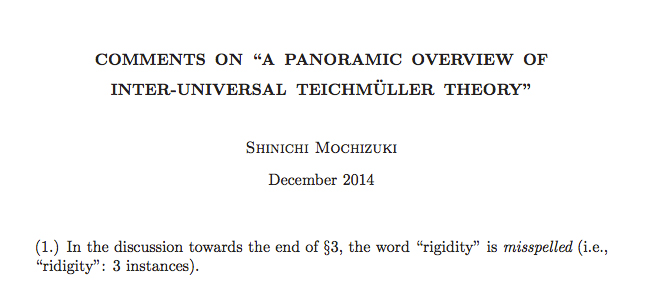Please allow for a couple of end-of-semester bluesy ramblings. I just finished grading the final test of the last of five courses I lectured this semester.
Most of them went, I believe, rather well.
As always, it was fun to teach an introductory group theory course to second year physics students.
Personally, I did enjoy our Lie theory course the most, given for a mixed public of both mathematics and physics students. We did the spin-group $SU(2)$ and its connection with $SO_3(\mathbb{R})$ in gruesome detail, introduced the other classical groups, and proved complete reducibility of representations. The funnier part was applying this to the $U(1) \times SU(2) \times SU(3)$-representation of the standard model and its extension to the $SU(5)$ GUT.
Ok, but with a sad undertone, was the second year course on representations of finite groups. Sad, because it was the last time I’m allowed to teach it. My younger colleagues decided there’s no place for RT on the new curriculum.
Soit.
The final lecture is often an eye-opener, or at least, I hope it is/was.
Here’s the idea: someone whispers in your ear that there might be a simple group of order $60$. Armed with only the Sylow-theorems and what we did in this course we will determine all its conjugacy classes, its full character table, and finish proving that this mysterious group is none other than $A_5$.
Right now I’m just a tad disappointed only a handful of students came close to solving the same problem for order $168$ this afternoon.
Clearly, I gave them ample extra information: the group only has elements of order $1,2,3,4$ and $7$ and the centralizer of one order $2$ element is the dihedral group of order $8$. They had to determine the number of distinct irreducible representations, that is, the number of conjugacy classes. Try it yourself (Solution at the end of this post).
For months I felt completely deflated on Tuesday nights, for I had to teach the remaining two courses on that day.
There’s this first year Linear Algebra course. After teaching for over 30 years it was a first timer for me, and probably for the better. I guess 15 years ago I would have been arrogant enough to insist that the only way to teach linear algebra properly was to do representations of quivers…
Now, I realise that linear algebra is perhaps the only algebra course the majority of math-students will need in their further career, so it is best to tune its contents to the desires of the other colleagues: inproducts, determinants as volumes, Markov-processes and the like.
There are thousands of linear algebra textbooks, the one feature they all seem to lack is conciseness. What kept me going throughout this course was trying to come up with the shortest proofs ever for standard results. No doubt, next year the course will grow on me.
Then, there was a master course on algebraic geometry (which was supposed to be on scheme theory, moduli problems such as the classification of fat points (as in the car crash post, etale topology and the like) which had a bumpy start because class was less prepared on varieties and morphisms than I had hoped for.
Still, judging on the quality of the papers students are beginning to hand in (today I received one doing serious stuff with stacks) we managed to cover a lot of material in the end.
I’m determined to teach that first course on algebraic geometry myself next year.
Which brought me wondering about the ideal content of such a course.
Half a decade ago I wrote a couple of posts such as Mumford’s treasure map, Grothendieck’s functor of points, Manin’s geometric axis and the like, which are still quite readable.
In the functor of points-post I referred to a comment thread Algebraic geometry without prime ideals at the Secret Blogging Seminar.
As I had to oversee a test this afternoon, I printed out all comments (a full 29 pages!) and had a good time reading them. At the time I favoured the POV advocated by David Ben-Zvi and Jim Borger (functor of points instead of locally ringed schemes).
Clearly they are right, but then so was I when I thought the ‘right’ way to teach linear algebra was via quiver-representations…
We’ll see what I’ll try out next year.
You may have wondered about the title of this post. It’s derived from a paper Raf Bocklandt (of the Korteweg-de Vries Institute in Amsterdam) arXived some days ago: Reflections in a cup of coffee, which is an extended version of a Brouwer-lecture he gave. Raf has this to say about the Brouwer fixed-point theorem.
“The theorem is usually explained in worldly terms by looking at a cup of coffee. In this setting it states that no matter how you stir your cup, there will always be a point in the liquid that did not change position and if you try to move that part by further stirring you will inevitably move some other part back into its original position. Legend even has it that Brouwer came up with the idea while stirring in a real cup, but whether this is true we’ll never know. What is true however is that Brouwers refections on the topic had a profound impact on mathematics and would lead to lots of new developments in geometry.”
I wish you all a pleasant end of 2016 and a much better 2017.
—
As to the 168-solution: Sylow says there are 8 7-Sylows giving 48 elements of order 7. The centralizer of each of them must be $C_7$ (given the restriction on the order of elements) so two conjugacy classes of them. Similarly each conjugacy class of an order 3 element must contain 56 elements. There is one conjugacy class of an order 2 element having 21 elements (because the centralizer is $D_4$) giving also a conjugacy class of an order 4 element consisting of 42 elements. Together with the identity these add up to 168 so there are 6 irreducible representations.
Comments closed
